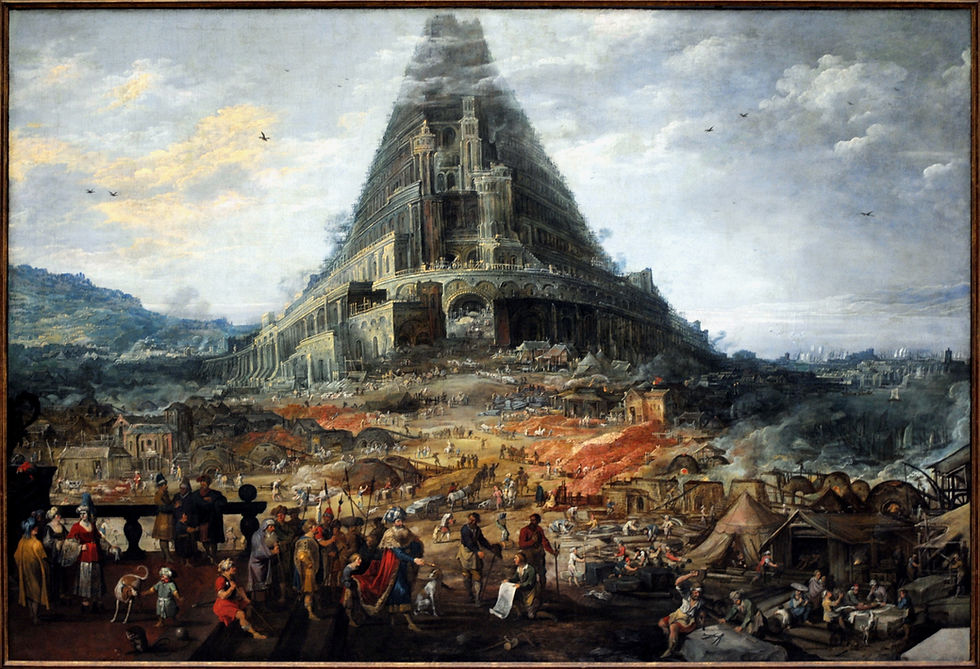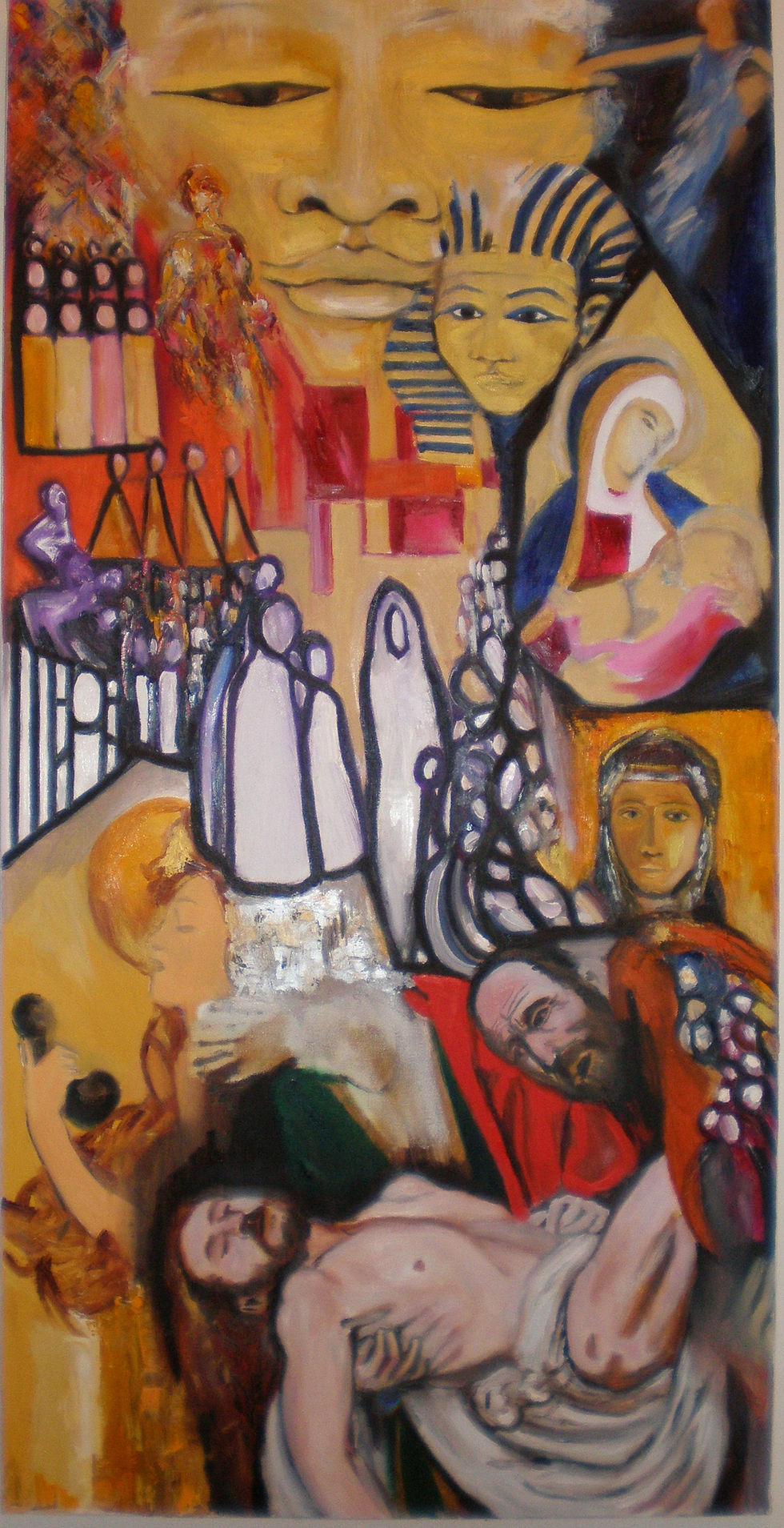The N Pathology Trifecta of Now and the NWO
- James Tunney

- Jun 27
- 4 min read
Updated: Jul 6
Our spiritual consciousness is affected by the cognitive and cultural conditions it operates in. The materialist and physicalist perspective understands the significance of the meme and extended phenome. That means that we can be fundamentally re-shaped from external sources. The mechanical matrix is aptly indicative of the context of birth of a new human. This is most clearly evident in the idea of ectogenesis as a real phenomenon currently being promoted to solve the problem we were told was a solution.
We are encountering a permanent revolution or a permanent cultural revolution induced by technology and consistent with both communist and capitalist aspirations. The core idea of this revolution was related to management of electricity and associated technologies such as the dynamo. These are central to ideas of the future when one looks at the thinking of influential political actors in the 20th century.
When we talk of current thoughts, current affairs and so on, we are using words associated with water and other substances but very much with electricity.
Perhaps associated with such central symbols are a trifecta that might be described as mass pathologies of netphilia, neophilia and neomechanophilia. Forgive my pathologising but we need to see the seriousness of our context. This trifecta affects the conduct of our spiritual consciousness negatively if obviously obsessive.
Netphilia might be described as the excessive love of networks and here I mean digital networks. Certainly we need to use networks, are forced to engage and are compelled to remain. Nevertheless we do actively accept, participate and operate in them. Excessive engagement leaves us prey to the predatory forces of algorithmic manipulation calculated to change us to reflect programmed desires externally originating. The snake in the garden coiling around the tree is moving through the cornucopia of digital choices we engage in. We may end up giving our attention to sinister stuff, subjects and objects. That can impact on our spiritual consciousness. We may be possessed to some extent in our consciousness and in the future literally so with brain-cloud nanotech interfaces. Networks may become an idol with a communion of interaction through a platform as altar with avatars and so on. Now AI is to be God.
Neophilia refers to the love of the new. New things may be appealing but when they are so only because they are novel, we have a problem. The idea of progress implies the departure from tradition and an inevitable embrace of futurism. That which is new is better. New ideas, new machines, new products, new people, new partners and so on become the normal. New is normal. In this way, anything old, familiar, traditional or conservative is eschewed or discarded. The excessive gravitation to the new and the illusion of a promised land tomorrow, just over the hill means that we make much obsolescent very quickly. In Cuba, because of import bans, people worked on old cars and maintained beautiful examples that were obsolete in the rest of America. I see cities being dug up for tram tracks where they had them a century ago. We are to have my copper-wired land-line taken to make us dependent on other systems. What a waste of existing systems! The end-result of this neophilia is the obsolescence of the human itself and their species. Obviously, the cultivation of netphilia makes this easier. Neophilia assists cultural corrosion by devaluing memory and the memory of operability and functionality. We induce a sort of permanent revolution with a corralling, carolling, carouselling of consciousness in a kaleidoscopic spectacle without meaning, purpose or telos beyond its own newness. Everything is supposedly better than before, newer, faster, quieter and so on. We dispose of our values and cultural intangibles for counterfeits in a smooth system sting operation with a shoddy simulacrum of epistemological perishing.
Neomechanophilia refers to a love of new machines. Newness and novelty and neophilia is directed to machines in particular. This derives from the physicalist, mechanistic mind-set. Such a perspective tends towards the machine and determinism. It is heavily left-hemisphere of the brain in origins. The new machines seem to satisfy or provide a dummy for a need of a sense of progress, meaning, competitive improvement and evolution. The sense of prosthesis presents a new possibility that is perceived to be inevitably good. The perceived benefits always ignore the costs and externalities, personally and socially. The ultimate expression of neomechanophilia is transhumanism and posthumanism which indicates that there is no greater love than to merge with or turn yourself into a machine to make a new human. Before then you can literally love robots.
All play out in us and are being demanded by the pull of our reducing desires. The push comes from organising orders of the new order as anticipated by H.G.Wells (here I talk about the life and work of Wells). To abolish nation-state, religion and family you must supply something else. If a technoscientific elite are to run us they will make it about networks, machines and control systems. Anything new, new machines and new networks will help eradicate and erase existing cultural and human networks to form the new metropolitan matrix. The N Pathology Trifecta describes a physicalist-political global ambition made manifest in promoted policies which mechanical create inflated desires for purposes of instantiation of a standard new order predicated on replacement of diverse old ones paradoxically and duplicitously proclaiming values of diversity when they mean novelty. The permanent revolution must shred spiritual consciousness and free will.


